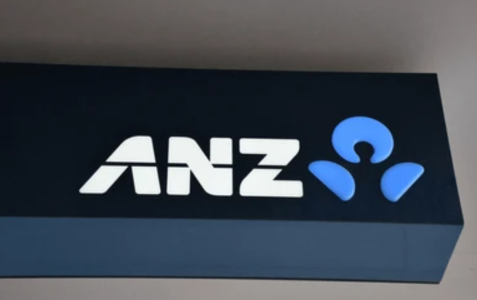ANZ faces backlash over $56,000 scam loss: Small business owner battle for accountability
By
- Replies 24
In a digital age where convenience and speed often take precedence, the dark underbelly of cybercrime lurks, ready to pounce on the unsuspecting.
This tale is a stark reminder of the perils that can befall even the most seasoned online business operators.
It's a story that has left a small business founder financially devastated and embroiled in a battle with one of Australia's largest banks, ANZ, over who should bear the responsibility for a significant financial loss due to a scam.
Roland Sharman, the founder of Sail Shade World, a company that has flourished internationally over the past 18 years, found himself in a dire situation when he discovered that he had been scammed out of a staggering $56,000.
The scam involved 21 fraudulent credit card transactions in July, which shipped products to Jordan in the Middle East.
To his dismay, the card details used were stolen, resulting in the money being retracted and the goods being lost forever.
As if the financial loss wasn't enough, Mr Sharman's woes were compounded by what he perceives as ANZ's failure to adequately inform him of a critical cybersecurity measure known as 3DSecure.
This protocol, designed to protect merchants and customers from fraudulent transactions, was not on Mr. Sharman's radar, and he claimed that the bank should have informed him of its availability.
The situation took a turn for the worse when ANZ reportedly refused to assist Mr Sharman, placing the onus on him for not utilising 3DSecure and leaving him vulnerable to fraud.
The bank's stance has sparked outrage and a heated debate about the responsibilities of financial institutions in preventing cybercrime.
Mr Sharman, now 80, described the gut-wrenching feeling of seeing the transactions cancelled due to their fraudulent nature.
He expressed frustration with ANZ's response, which seemed to deflect responsibility back onto him as the business owner.
The bank's representative allegedly told him it was not their job to look after his security, a claim that Mr Sharman vehemently disagrees with.
The cost of adding 3DSecure to his processing fee was a mere five cents per transaction, which Mr Sharman stated he would have willingly paid had he been informed about it.
He argued that the increased fees he has paid over the years for supposed enhanced security measures did not deliver when it mattered most.
After unsuccessful attempts to resolve the issue with ANZ representatives, Mr Sharman took his case to the Australian Financial Complaints Authority (AFCA) on 16 August.
His lawyer believes that banks have been pushing the boundaries to profit from online transactions while shirking financial responsibility when their systems allow scams to occur.
To recoup some of his losses and advocate for change, Mr Sharman has launched a GoFundMe campaign.
His goal is not only to recover funds but also to initiate a movement that compels banks to accept responsibility for cybercrimes on their systems and push for legislation that offers customers greater protection.
In response to the allegations, ANZ Worldline Payment Solutions stated that the merchant's gateway provider must enable 3D Secure and that they are not the gateway provider in this case.
They claim to provide information about 3D Secure through various channels and encourage customers to confirm its availability if using a third-party provider.
In other news, ANZ faces sanctions for charging fees to deceased clients' estates, a significant violation of banking regulations.
The Banking Code Compliance Committee conducted an investigation and has publicly called out ANZ for failing to promptly cease these fees or refund them following clients' deaths. Learn more about the issue here.

Have you or someone you know been affected by a similar situation? What measures do you take to protect yourself from online scams? Share your experiences and tips in the comments below.
This tale is a stark reminder of the perils that can befall even the most seasoned online business operators.
It's a story that has left a small business founder financially devastated and embroiled in a battle with one of Australia's largest banks, ANZ, over who should bear the responsibility for a significant financial loss due to a scam.
Roland Sharman, the founder of Sail Shade World, a company that has flourished internationally over the past 18 years, found himself in a dire situation when he discovered that he had been scammed out of a staggering $56,000.
The scam involved 21 fraudulent credit card transactions in July, which shipped products to Jordan in the Middle East.
To his dismay, the card details used were stolen, resulting in the money being retracted and the goods being lost forever.
As if the financial loss wasn't enough, Mr Sharman's woes were compounded by what he perceives as ANZ's failure to adequately inform him of a critical cybersecurity measure known as 3DSecure.
This protocol, designed to protect merchants and customers from fraudulent transactions, was not on Mr. Sharman's radar, and he claimed that the bank should have informed him of its availability.
The situation took a turn for the worse when ANZ reportedly refused to assist Mr Sharman, placing the onus on him for not utilising 3DSecure and leaving him vulnerable to fraud.
The bank's stance has sparked outrage and a heated debate about the responsibilities of financial institutions in preventing cybercrime.
Mr Sharman, now 80, described the gut-wrenching feeling of seeing the transactions cancelled due to their fraudulent nature.
He expressed frustration with ANZ's response, which seemed to deflect responsibility back onto him as the business owner.
The bank's representative allegedly told him it was not their job to look after his security, a claim that Mr Sharman vehemently disagrees with.
The cost of adding 3DSecure to his processing fee was a mere five cents per transaction, which Mr Sharman stated he would have willingly paid had he been informed about it.
He argued that the increased fees he has paid over the years for supposed enhanced security measures did not deliver when it mattered most.
After unsuccessful attempts to resolve the issue with ANZ representatives, Mr Sharman took his case to the Australian Financial Complaints Authority (AFCA) on 16 August.
His lawyer believes that banks have been pushing the boundaries to profit from online transactions while shirking financial responsibility when their systems allow scams to occur.
To recoup some of his losses and advocate for change, Mr Sharman has launched a GoFundMe campaign.
His goal is not only to recover funds but also to initiate a movement that compels banks to accept responsibility for cybercrimes on their systems and push for legislation that offers customers greater protection.
In response to the allegations, ANZ Worldline Payment Solutions stated that the merchant's gateway provider must enable 3D Secure and that they are not the gateway provider in this case.
They claim to provide information about 3D Secure through various channels and encourage customers to confirm its availability if using a third-party provider.
In other news, ANZ faces sanctions for charging fees to deceased clients' estates, a significant violation of banking regulations.
The Banking Code Compliance Committee conducted an investigation and has publicly called out ANZ for failing to promptly cease these fees or refund them following clients' deaths. Learn more about the issue here.
Key Takeaways
- A small business owner lost over $56,000 to scammers who used stolen credit card details for fraudulent transactions.
- Roland Sharman, a businessman, criticised ANZ Bank for not informing him about the 3DSecure cybersecurity measure, which could have prevented the scam.
- ANZ Bank claimed it is not at fault because the merchant's gateway provider did not enable the security protocol and insists it is not its responsibility to secure the customer’s transactions.
- Roland Sharman has filed an official complaint with the Australian Financial Complaints Authority (AFCA) and initiated a GoFundMe to recoup losses and push banks to accept greater responsibility for cybersecurity on their systems.








